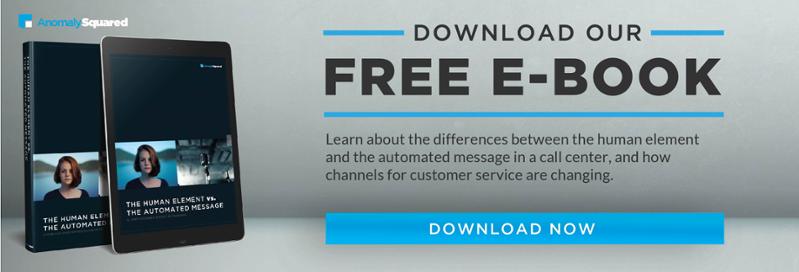Average Call Time: A Baseline of Customer Service
Average Call Time (ACT), sometimes referred to as Average Handle Time (AHT), is often set as low as possible in the Customer Service (CS) industry. Although efficiency is paramount, education, conversation and service are also important factors. This average call time should be set at a minimum, not a maximum, duration. This way, representatives feel free to make suggestions, introduce new products or offer savings without regards for exceeding a time limit.
Download our free e-book about the Human Element vs. the Automated Message.
Data-Driven Industry
The success of a call center, and the representatives connecting with customers, is linked directly to data. For example, if an inbound reorder, the simplest of transactions, takes a little over two minutes, management can feel safe establishing a goal time around two minutes. Very short calls, like one that lasts only five seconds, can be an accidental or purposeful drop by the representative. When investigating such calls, it is beneficial to recreate the data -- i.e., role-playing to mimic specific call times. Both the recreating of call metrics and observational data serve to set goals for a call center.
The Multifunctional Role of Customer Service
Some call centers provide bonuses for upselling products for representatives whose primary function is to answer customer questions and update accounts. For example, a clothing store might offer its CS department a bonus for multiplying the quantity of product in an order. Establishing a minimum handle time in this circumstance supports the multifunctional role of the representative who is responsible for both selling and serving.
Lead Qualifiers and Inside Sales
From booth staff at a convention to a formal inside sales department, the job of a lead qualifier is to find customers who could benefit from a particular product or service and forward the best leads to a sales team. It is then up to sales (inside, outside, inbound, etc.) to close the lead. Although some inside sales teams are tasked with lead generation, it is a company-wide responsibility. Therefore, even though inside sales will forward a potential lead to the sales team, CS should also feel comfortable discussing a client's needs without regard for their call time. The best customer service will benefit the entire company.
Asking open-ended questions is a well-understood concept in the sales and CS industries. The goal is to promote dialogue during which the customer's needs are identified. Such dialogue will extend a call, thereby making a minimum call time, rather than a maximum call time, a more accurate benchmark.
Sources:
http://www.impactlearning.com/customer-service-by-the-numbers-average-call-duration/
http://blog.kayako.com/why-average-handle-time-is-a-terrible-metric/


